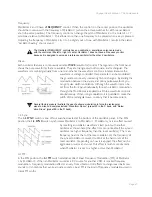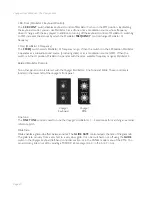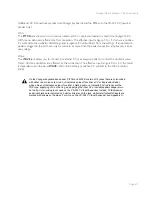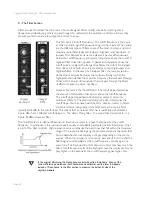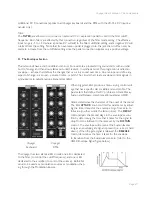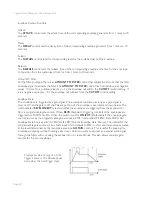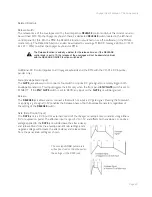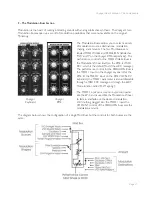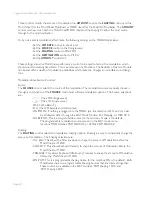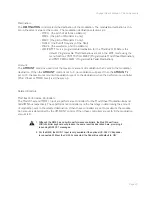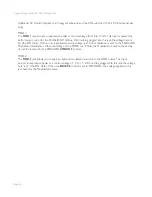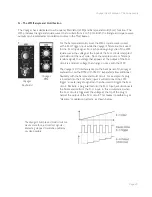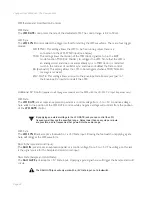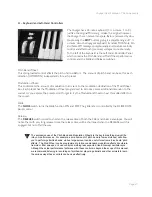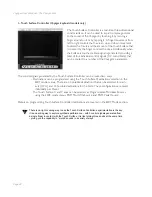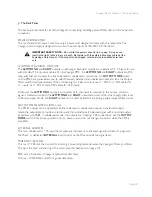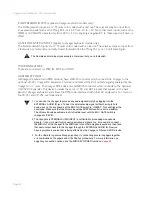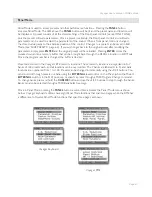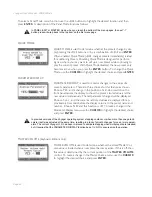
Page 30
Voyager User’s Manual - The Components
Page 31
Voyager User’s Manual - The Components
E. The Output Section
The Voyager has two audio outputs. There is a Voltage Controlled Amplifier (VCA) for each output, which
allows for stereo functions such as panning or the dual lowpass filtering. The main control for the volume is
the Master Volume control. The Volume Envelope modulates the output VCAs.
Output Section controls:
Master Volume:
The
MASTER VOLUME
knob is the main volume control. Full-clockwise
is maximum output, full-counterclockwise silences the Voyager. .
Headphone Volume:
This
HEADPHONE VOLUME
knob controls the volume that appears
on the
HEADPHONE OUTPUT
jack. Full-clockwise is maximum
output, full-counterclockwise silences the Voyager.
Headphone Output:
The
HEADPHONE OUTPUT
connection is a 1⁄4” TRS jack that outputs
the Voyager signal to a pair of stereo headphones.
Additional CV Control (applies to all Voyager keyboards and the RME with the VX-352 CV Input Expander
only):
Volume:
The
VOLUME
jack allows you to connect an external CV or expression pedal to control the output
volume. Both VCA’s are effected by this connection. The effective input range is 0 to +5 V, where
0V = Volume OFF, and +5V = Full Volume.
Pan:
The
PAN
jack allows you to connect an external CV or expression pedal to control panning between
the right and left outouts. The effective input range is -5 to +5 V, where -5V = Fully Left and
+5V = Fully Right. If an expression pedal is plugged into the
PAN
jack, the pedal will reach its full
positive effect over just half of its useful travel, since it gets +5v from the
PAN
jack. Note also that you will
not be able to pan left with the pedal without additional offset programming because the expression pedal
voltage does not go below 0V.
Voyager
Keyboard
Voyager
RME
In the RME, the Headphone Volume knob can be
reprogrammed to act as a Modulation Wheel controller.






